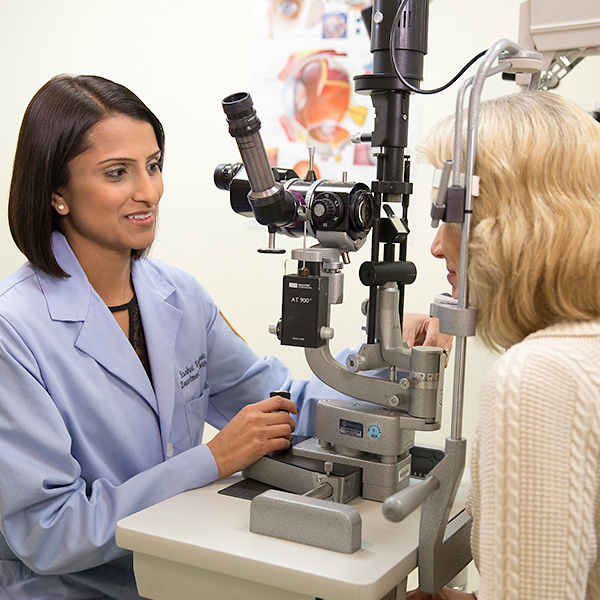Pigmentary Glaucoma
Overview and Facts about Pigmentary Glaucoma
Pigmentary glaucoma is an eye condition that occurs when the layer of the eye containing pigment, the iris, rubs against the lens, causing the release of pigment particles. These particles accumulate in the eye, preventing the fluid produced by the eye from draining.
Fluid build-up can cause increased eye pressure and the development of glaucoma conditions. Eventually, damage to the optic nerve, the structure responsible for sending visual stimuli to your brain, leads to vision loss.
Delayed diagnosis or poor management of pigmentary glaucoma conditions can lead to permanent blindness. Regular visits to an eye specialist can help detect pigmentary glaucoma early on, allowing for immediate treatment.
Signs and Symptoms of Pigmentary Glaucoma
Pigmentary glaucoma is usually identified by symptoms associated with an elevated intraocular pressure. Visually, abnormal pigmentation will be observed in multiple layers of the patient's eyes.
Signs and symptoms of pigmentary glaucoma include:
- Severe headache
- Nausea or vomiting
- Reduced visual acuity
- Elevated intraocular pressure
- Light sensitivity
Causes and Risk Factors of Pigmentary Glaucoma
Pigmentary glaucoma typically affects nearsighted patients because their eyes are more concave or flat in shape, widening the angle and causing the iris and lens to rub.
Besides eye shape and size, other physical characteristics and tendencies may also lead to the development of pigmentary glaucoma. For example, increased blinking, which causes a rise in intraocular pressure.
Other risk factors include having a family member with the condition, as pigmentary glaucoma is frequently inherited.
Being a man between 20–30 years of age also puts you at risk: more men than women present with pigmentary glaucoma, and while men typically present in their 30s, women with pigmentary glaucoma usually present in their 40s.
Tests and Diagnosis of Pigmentary Glaucoma
A diagnosis of pigmentary glaucoma is primarily based on clinical examination. Elevated intraocular pressure along with the presence of abnormal pigmentation or defects that appear on multiple layers of the eye—and without another clinical explanation such as traumatic injury—are the main criteria used to diagnose pigmentary glaucoma.
One test, gonioscopy, is an observational procedure used to assess the drainagle part of the eye, and is generally recommended to evaluate the extent of accumulated pigment.
Treatment and Care for Pigmentary Glaucoma
There is no way to prevent pigmentary glaucoma, but in patients that are nearsighted or have concave eye shapes, a laser procedure called an iridotomy equalizes pressure in the chamber of the eye, allowing the iris to pull away from the lens.
Treatment of pigmentary glaucoma is similar to other glaucoma conditions and includes medication, laser surgery and filtration surgery. Specific treatments for pigmentary glaucoma include:
- Drug therapies used to manage inflammation and control ocular muscle spasms
- Medications to suppress the production of fluids in lowering intraocular pressure
- Trabeculectomy, which is a filtration surgery that drains fluid out of the eye to reduce eye pressure
- Trabeculoplasty, which is laser surgery that opens the channel to increase fluid outflow
- Fluid drainage devices that are surgically implanted
- Cyclodestruction, a procedure that reduces pressure in the eye by destroying the parts that produce fluids
- Pain management techniques

Request an Appointment
Whether you are seeking routine eye care or have a specific vision issue, our team treats a wide range of eye diseases and conditions, including cataracts, glaucoma, macular degeneration and strabismus. Schedule an appointment today.
Schedule a Telehealth Appointment
